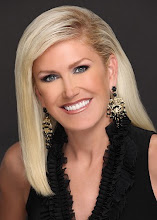 Yesterday was a GIANT LEAP forward toward a ban on the sale of UV tanning to minors! The collective testimonies of some very dedicated physicians, researchers, organizations and individuals made it very difficult for the FDA committee to recommend anything other than a ban for minors.
Yesterday was a GIANT LEAP forward toward a ban on the sale of UV tanning to minors! The collective testimonies of some very dedicated physicians, researchers, organizations and individuals made it very difficult for the FDA committee to recommend anything other than a ban for minors.Melanoma Survivor and Cherish Your Skin Organization Founder, Jenifer Kuykendall, "What an amazing experience to be a part of this influential group addressing the FDA panel. Let's hope the FDA does the right thing and protects our children."
Stay Tuned for the final ruling to come soon!
FDA Panel Advises No Tanning Beds for Minors
FDA Advisory Panel Recommends Ban on Tanning Beds for Children Under 18
FDA Advisory Panel Recommends Ban on Tanning Beds for Children Under 18
 Minors could be barred from indoor tanning and a registry could be required to monitor the use of tanning beds by salons if the U.S. Food and Drug Administration heeds advice from a panel it convened to review the classification of tanning beds.
Minors could be barred from indoor tanning and a registry could be required to monitor the use of tanning beds by salons if the U.S. Food and Drug Administration heeds advice from a panel it convened to review the classification of tanning beds.Ultraviolet, or UV, lamps for tanning currently are considered class I medical devices by the FDA, which means they are subject to relatively few regulations.
The FDA could boost tanning beds either to a class II or class III medical device -- a change that would mean stricter regulation. Among the new rules could be a prohibition of devices containing mirrors that amplify the power of UV exposure. A few members of the FDA panel dissented on the under-18 ban. They agreed with the sentiment of a ban, but thought it would be unrealistic to implement a ban and would be better to require strong warnings and parental notification.
A few members of the FDA panel dissented on the under-18 ban. They agreed with the sentiment of a ban, but thought it would be unrealistic to implement a ban and would be better to require strong warnings and parental notification.
More than 30 million people tan indoors every year, and nearly three quarters of them are women between ages 16 and 29, according to the Journal of American Dermatology.
 Using a tanning bed before the age of 35 increases the risk of melanoma -- the deadliest form of skin cancer -- by 75 percent, according to the Melanoma Research Foundation.
Using a tanning bed before the age of 35 increases the risk of melanoma -- the deadliest form of skin cancer -- by 75 percent, according to the Melanoma Research Foundation.
Skin cancer is one of the few cancers for which a preventative option exists, said Dr. Allen Halpern, vice president of The Skin Cancer Foundation, who testified at the panel meeting.
The FDA could boost tanning beds either to a class II or class III medical device -- a change that would mean stricter regulation. Among the new rules could be a prohibition of devices containing mirrors that amplify the power of UV exposure.
 A few members of the FDA panel dissented on the under-18 ban. They agreed with the sentiment of a ban, but thought it would be unrealistic to implement a ban and would be better to require strong warnings and parental notification.
A few members of the FDA panel dissented on the under-18 ban. They agreed with the sentiment of a ban, but thought it would be unrealistic to implement a ban and would be better to require strong warnings and parental notification.More than 30 million people tan indoors every year, and nearly three quarters of them are women between ages 16 and 29, according to the Journal of American Dermatology.
 Using a tanning bed before the age of 35 increases the risk of melanoma -- the deadliest form of skin cancer -- by 75 percent, according to the Melanoma Research Foundation.
Using a tanning bed before the age of 35 increases the risk of melanoma -- the deadliest form of skin cancer -- by 75 percent, according to the Melanoma Research Foundation.Skin cancer is one of the few cancers for which a preventative option exists, said Dr. Allen Halpern, vice president of The Skin Cancer Foundation, who testified at the panel meeting.
 Tanning salon businesses, one of the many industries hard hit by the recession, are already feeling the heat with the passage of the Obama administration's new health care bill. The bill includes a 10 percent tax on individuals receiving indoor tanning services, and the initiative is expected to generate $2.7 billion over 10 years to help fund the health care overhaul.
Tanning salon businesses, one of the many industries hard hit by the recession, are already feeling the heat with the passage of the Obama administration's new health care bill. The bill includes a 10 percent tax on individuals receiving indoor tanning services, and the initiative is expected to generate $2.7 billion over 10 years to help fund the health care overhaul. 

 The National Council on Skin Cancer Prevention’s premier event, Skin Cancer in America: A Growing Epidemic in the Rayburn House Office building on Capitol Hill in Washington, DC served as a call-to-action for Congressional staffers.
The National Council on Skin Cancer Prevention’s premier event, Skin Cancer in America: A Growing Epidemic in the Rayburn House Office building on Capitol Hill in Washington, DC served as a call-to-action for Congressional staffers.
 Michelle
Michelle  Today is the DAY! The FDA will hear the facts about tanning beds and skin cancer. We will ask them to immediately reclassify for the purpose of protecting the American public.
Today is the DAY! The FDA will hear the facts about tanning beds and skin cancer. We will ask them to immediately reclassify for the purpose of protecting the American public.
 Also presenting their stories will be other cancer survivors, and sadly, families of patients who died from Skin Cancer.
Also presenting their stories will be other cancer survivors, and sadly, families of patients who died from Skin Cancer.  American Academy of Dermatology Association (AADA) President, William D. James, M.D., FAAD will lead the meeting of top physicians and researchers in Dermatology, who will share the undeniable facts about the cancer causing UV tanning devices.
American Academy of Dermatology Association (AADA) President, William D. James, M.D., FAAD will lead the meeting of top physicians and researchers in Dermatology, who will share the undeniable facts about the cancer causing UV tanning devices.
 You know I want you wearing SPF 30 and above to protect your skin from the dangerous rays.... but here is a great way you can pamper your beautiful skin.
You know I want you wearing SPF 30 and above to protect your skin from the dangerous rays.... but here is a great way you can pamper your beautiful skin. 






 Thanks to our sponsor,
Thanks to our sponsor, 



 Thanks to
Thanks to 
 Also presenting their stories will be other cancer survivors, and sadly, families of patients who died from Skin Cancer. Importantly, the leading doctors and researchers will share the facts undeniably linking Skin Cancer and tanning beds. Together, we will ask the FDA to appropriately reclassify tanning beds to better protect the public.
Also presenting their stories will be other cancer survivors, and sadly, families of patients who died from Skin Cancer. Importantly, the leading doctors and researchers will share the facts undeniably linking Skin Cancer and tanning beds. Together, we will ask the FDA to appropriately reclassify tanning beds to better protect the public.

 UVA RAYS BURN!
UVA RAYS BURN!


 Jenifer also knows all too well that prolonged exposure to the UV rays can result in Skin Cancer. As a 5-year survivor of Malignant Melanoma, Jenifer is making a difference with her non-profit organization, Cherish Your Skin. She understands that education equals prevention and that early detection is a key part to surviving Skin Cancer. Jenifer's goal as Mrs. Texas International 2010 will be to heighten awareness about Skin Cancer and stress the importance of Skin Cancer Prevention.
Jenifer also knows all too well that prolonged exposure to the UV rays can result in Skin Cancer. As a 5-year survivor of Malignant Melanoma, Jenifer is making a difference with her non-profit organization, Cherish Your Skin. She understands that education equals prevention and that early detection is a key part to surviving Skin Cancer. Jenifer's goal as Mrs. Texas International 2010 will be to heighten awareness about Skin Cancer and stress the importance of Skin Cancer Prevention. Opportunities abound throughout our great state of Texas to change paradigms and save lives. Cherish Your Skin Organization's mission, projects and platform will accomplish this, with vital partnerships with The Skin Cancer Foundation and MD Anderson Cancer Center. Her educational outreach includes health fairs and skin cancer screenings with presentations to children, parents and teachers in our school system. Sunscreen distribution along with readings of her early education book, Cherish Your Skin, make a difference in the lives she touches.
Opportunities abound throughout our great state of Texas to change paradigms and save lives. Cherish Your Skin Organization's mission, projects and platform will accomplish this, with vital partnerships with The Skin Cancer Foundation and MD Anderson Cancer Center. Her educational outreach includes health fairs and skin cancer screenings with presentations to children, parents and teachers in our school system. Sunscreen distribution along with readings of her early education book, Cherish Your Skin, make a difference in the lives she touches.

 Soon, everyone was off to enjoy the fair, rides and games-and listen to great local music. Many enjoyed the "famous"oysters. I stopped to reapply my sunscreen, though, making sure I was protected for the rest of our fun in the sun!
Soon, everyone was off to enjoy the fair, rides and games-and listen to great local music. Many enjoyed the "famous"oysters. I stopped to reapply my sunscreen, though, making sure I was protected for the rest of our fun in the sun!
_brown.jpg) Fulton Mayor Russel Cole joins Fulton Fire Chief Ricky Mc Lester in welcoming you to a wonderful family outing at the Fulton Oysterfest! They have done all in their power to ensure this event will be safe, family fun and a weekend you will remember. There will be live music, yummy festival food (anyone want fried oysters? yum), unique artists, and even an oyster eating contest!
Fulton Mayor Russel Cole joins Fulton Fire Chief Ricky Mc Lester in welcoming you to a wonderful family outing at the Fulton Oysterfest! They have done all in their power to ensure this event will be safe, family fun and a weekend you will remember. There will be live music, yummy festival food (anyone want fried oysters? yum), unique artists, and even an oyster eating contest!

 As a survivor of Malignant Melanoma who spent many years in tanning beds, I have joined the Skin Cancer Foundation in this important fight against tanning beds. I was told by the tanning bed salons that laying in the bed would provide a "safer" tan since I would "not be exposed to the dangerous rays". I was encouraged to get my daily "fix" over many years, because tanned bodies look healthier, right?
As a survivor of Malignant Melanoma who spent many years in tanning beds, I have joined the Skin Cancer Foundation in this important fight against tanning beds. I was told by the tanning bed salons that laying in the bed would provide a "safer" tan since I would "not be exposed to the dangerous rays". I was encouraged to get my daily "fix" over many years, because tanned bodies look healthier, right? You can also help in this fight by signing an important petition to the FDA at the following site:
You can also help in this fight by signing an important petition to the FDA at the following site: Mrs.
Mrs.  The proceeds of the goods sold at Castaways benefit five area church groups which in turn, make donations to other community organizations benefiting our county overall. In 2009, Castaways gave $225,430 to over 25 organizations.
The proceeds of the goods sold at Castaways benefit five area church groups which in turn, make donations to other community organizations benefiting our county overall. In 2009, Castaways gave $225,430 to over 25 organizations.
.jpg)


